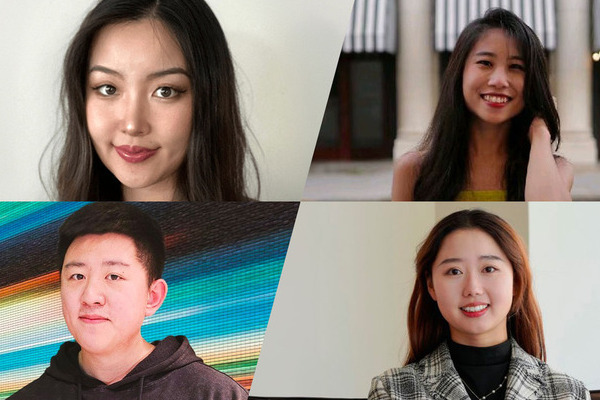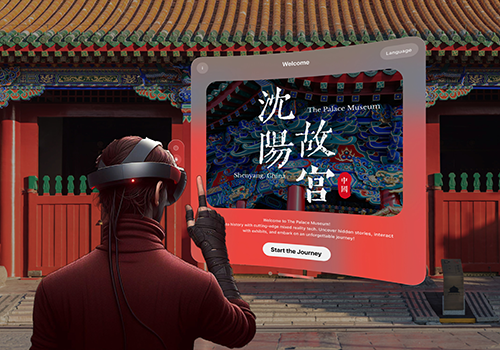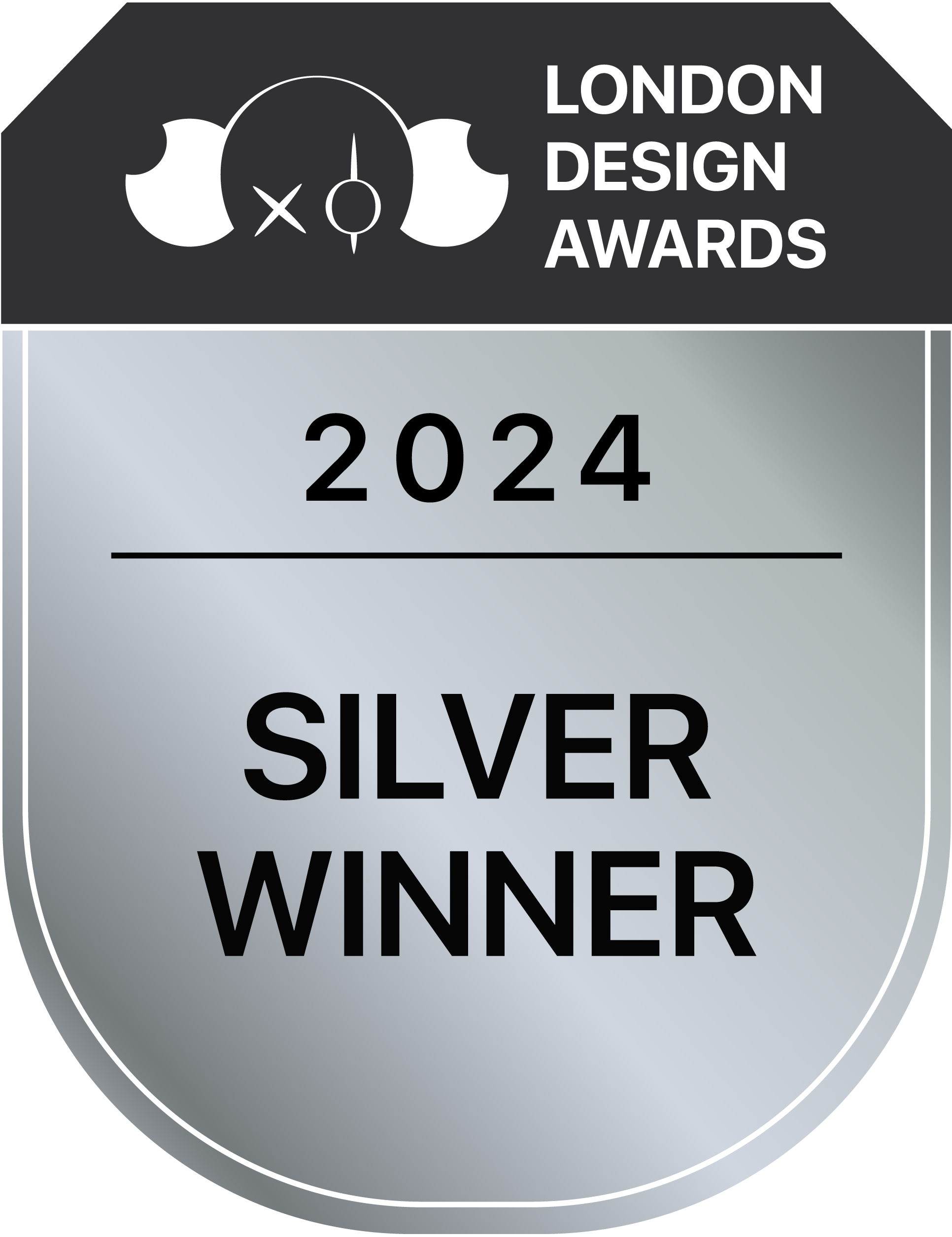
XR5 - Longzhe Zhang
1. Please give us a brief bio of yourself and your design background.
We are XR5, a diverse team of designers and developers from China, including Jiayi Chen (Toyota Motor North America, In-Vehicle UX Designer), Longzhe Zhang (UI/UX Designer), Zilan Zhou (Industrial Designer), Yefan Liu (Digital Artist), and Huancheng Huang (Business Development Expert). Our varied expertise allows us to tackle design challenges from multiple perspectives.
2. What made you become/why did you choose to become a designer/artist?
We became designers and artists out of a shared passion for creativity and innovation. Each of us was inspired by different experiences: Jiayi by automotive UX challenges, Longzhe by making technology user-friendly, Zilan by blending form and function, Yefan by visual storytelling, and Huancheng by bridging ideas and market needs. Together, we aim to solve problems creatively and enhance user experiences.
3. Tell us more about your agency/company, job profile, and what you do.
We are XR5, a multidisciplinary team specializing in design and development. Our team members include:
Jiayi Chen - In-Vehicle UX Designer at Toyota Motor North America, focusing on creating intuitive automotive user experiences.
Longzhe Zhang - UI/UX Designer, enhancing interactive and user-centered digital experiences.
Zilan Zhou - Industrial Designer, integrating form and function for innovative products.
Yefan Liu - Digital Artist, crafting compelling visual content.
Huancheng Huang - Business Development Expert, aligning projects with market needs.
Together, we tackle design challenges from multiple angles, aiming to innovate and improve user experiences in various fields.
4. What does “design” mean to you?
To us, "design" means creating solutions that are both functional and aesthetically pleasing, enhancing the way people interact with the world. It involves understanding user needs, solving problems creatively, and constantly innovating to improve experiences. Design is about blending form and function seamlessly, ensuring that every element serves a purpose while also delivering an engaging and intuitive experience. It’s a process of continuous learning, empathy, and iteration to achieve the best possible outcome.
5. What’s your favourite kind of design and why?
Our favorite kind of design is Mixed zreality because it seamlessly blends the digital and physical worlds, creating immersive and interactive experiences. This type of design allows us to push the boundaries of traditional interaction, providing users with a more engaging and educational way to explore and understand content. It combines various elements like 3D modeling, user interface design, and storytelling, making it a versatile and dynamic field that continuously challenges and inspires us.
6. To you, what makes a “good” design?
To us, a "good" design is one that is intuitive, functional, and aesthetically pleasing. It seamlessly meets user needs while providing an enjoyable and meaningful experience. Good design solves problems effectively, is user-centered, and considers accessibility and inclusivity. It combines creativity with practicality, ensuring that every element has a purpose and enhances the overall experience. Ultimately, good design leaves a lasting positive impact on users and stands the test of time.
7. How did you come up with the idea for your award-winning design?
The idea for the Mukden Palace Experience was born from our deep research and observations at the Shenyang Palace Museum. We noticed a gap between the rich cultural heritage of the exhibits and the engagement levels of modern visitors. Our goal was to bridge this gap by leveraging Mixed Reality technology to create an immersive and interactive experience.
We aimed to harmonize the authenticity of the cultural landmarks with cutting-edge digital experiences, allowing visitors to explore detailed multimedia content and interact with exhibits in a highly personalized way. This blend of tradition and technology set the foundation for our award-winning design.
8. What was your main source of inspiration for this design?
Our main source of inspiration for the Mukden Palace Experience was the Shenyang Palace Museum itself. The rich cultural heritage and historical significance of the exhibits sparked our desire to create a more immersive and interactive way for visitors to engage with them. We wanted to enhance the traditional museum experience by integrating Mixed Reality technology, allowing visitors to explore and connect with the artifacts on a deeper level. The museum's meticulously prepared multimedia content and the potential of modern technology to transform educational experiences inspired us to develop this innovative interface.
9. Do you think your country and its cultural heritage has an impact on your design process?
Absolutely, our country and its cultural heritage have a significant impact on our design process. China's rich history and diverse cultural heritage provide a deep well of inspiration and context for our work. The Mukden Palace Experience, for instance, is directly influenced by the historical and cultural significance of the Shenyang Palace Museum. Our design process is shaped by a desire to honor and preserve this heritage while making it accessible and engaging for modern audiences. This balance between tradition and innovation is a core aspect of our design philosophy.
10. Congratulations! As the winner of the London Design Awards, what does it mean to you and your company and team to receive this award distinction?
Winning the London Design Award is a tremendous honor for our team at XR5. It validates our hard work, creativity, and dedication to blending cultural heritage with cutting-edge technology. This recognition not only highlights the impact of our project, the Mukden Palace Experience but also reinforces our commitment to pushing the boundaries of user experience design.
It motivates us to continue innovating and exploring new ways to enhance how people interact with cultural artifacts. This award is a testament to our collaborative efforts and inspires us to keep striving for excellence in our future projects.
11. Can you explain a bit about the winning work you entered into the London Design Awards, and why you chose to enter this project?
The winning work we entered into the London Design Awards is the Mukden Palace Experience, a Mixed Reality Interface designed for the Shenyang Palace Museum. This project integrates advanced technology with traditional cultural exhibits, aiming to enhance visitor engagement and provide a deeply immersive experience. By utilizing devices like the Apple Vision Pro, we allow users to interact with meticulously prepared multimedia content, including 3D objects like porcelain and weaponry, and 2D works such as calligraphy and paintings. The interface, designed using Figma and Adobe Photoshop and tested with macOS Xcode, is both ergonomic and intuitive.
We chose to enter this project because it exemplifies our mission to harmonize cultural authenticity with interactive digital experiences. The Mukden Palace Experience is a pioneering example of how Mixed Reality can transform the way people connect with cultural heritage, making it an ideal submission for the User Experience Design (UX) category. Winning this award highlights the innovative nature of our work and its potential to set new standards in the field.
12. What were the main challenges you faced during the design process, and how did you overcome them?
Balancing Tradition and Technology: We ensured authenticity by conducting thorough research and collaborating with the Shenyang Palace Museum.
User Engagement: We made the interface intuitive and engaging by leveraging user research, including field observations and surveys.
Technical Constraints: We used Figma and Adobe Photoshop for design and macOS Xcode for testing to ensure an interactive and ergonomic interface optimized for the Apple Vision Pro.
Customization and Flexibility: We provided detailed multimedia content and intuitive controls to enable personalized and immersive user interactions.
By addressing these challenges with a user-focused approach, we created an innovative Mixed Reality experience that enhances visitor engagement and sets new standards for cultural heritage sites.
13. How do you think winning this award will impact your future as a designer?
Boosting Credibility: It validates our skills and innovation, enhancing our reputation in the design community.
Opening Opportunities: The recognition can lead to new collaborations, projects, and professional growth.
Inspiring Innovation: The accolade motivates us to continue pushing boundaries and exploring new design frontiers.
Building Confidence: It reinforces our belief in our approach, encouraging us to tackle more ambitious projects.
14. What are your top three (3) favorite things about the design industry?
Creativity and Innovation: The design industry constantly evolves, allowing us to push boundaries, explore new ideas, and bring innovative solutions to life.
Impact on User Experience: We love how design can transform and enhance user interactions, making everyday experiences more intuitive, enjoyable, and meaningful.
Collaborative Nature: The industry thrives on collaboration, bringing together diverse perspectives and expertise to create holistic and impactful designs.
15. What sets your design apart from others in the same category?
Combines Tradition with Innovation: We seamlessly integrate Mixed Reality with traditional exhibits, preserving cultural authenticity while providing an immersive digital experience.
User-Centered Approach: Extensive research, including field observations and user surveys, ensures our interface is highly intuitive and tailored to meet diverse user needs.
Customization and Depth: Our design allows users to deeply engage with detailed multimedia content, offering personalized interactions with both 3D and 2D artifacts.
16. Where do you see the evolution of design industry going over the next 5-10 years?
Increased Integration of Technology: Mixed Reality, AI, and IoT will become more prevalent, creating more immersive and interactive user experiences.
Focus on Sustainability: Designers will prioritize sustainable practices and materials, aiming to create eco-friendly solutions that reduce environmental impact.
Enhanced User Personalization: Advancements in data analytics and user feedback mechanisms will enable highly personalized and adaptive designs, catering to individual needs and preferences.
Cross-Disciplinary Collaboration: The lines between design disciplines will continue to blur, with more collaboration between fields like design, engineering, and psychology to create holistic and user-centric solutions.
Global and Cultural Influences: There will be a greater emphasis on culturally diverse perspectives, ensuring designs resonate with a global audience and respect local contexts.
17. What advice do you have for aspiring designers who want to create award-winning designs?
For aspiring designers aiming to create award-winning designs, focus on understanding user needs through thorough research and testing, embrace innovation and new technologies, balance functionality with aesthetics, and continuously refine your work. Ensure your designs tell a compelling story, collaborate with diverse teams, draw inspiration from various sources, and remain persistent despite setbacks.
18. What resources would you recommend to someone who wants to improve their skills in the design industry?
As a team, we recommend improving design skills by taking online courses on platforms like Coursera and Udemy, mastering tools like Adobe Creative Suite and Figma, reading essential design books like "The Design of Everyday Things" by Don Norman, joining design communities such as Dribbble and Behance, following design-focused podcasts and blogs, attending workshops and conferences, and continuously practicing and seeking feedback from peers and mentors. These resources will help any designer stay updated, inspired, and continually enhance their skills.

